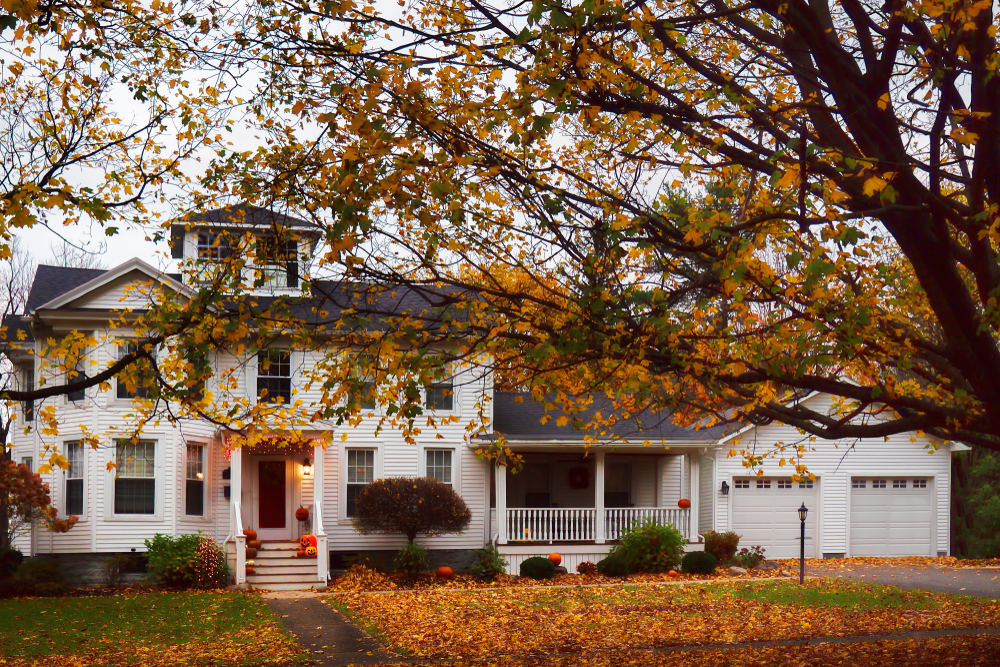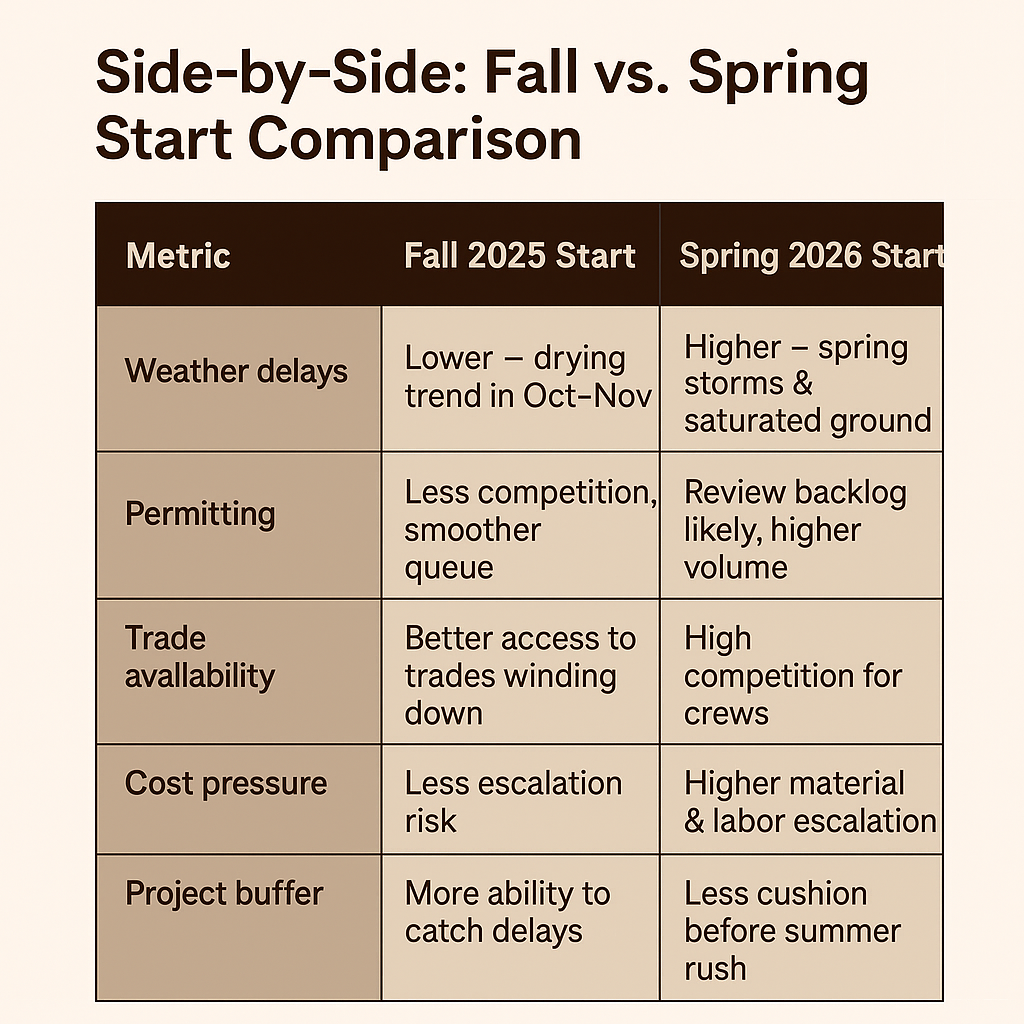
If you’ve been thinking about building a home in Tulsa, timing is everything. Start too early, and you’ll slog through mud and delays. Wait too long, and you might miss optimal trade schedules or hit permit queues. But fall 2025? It might just be the sweet spot.
In this post, we’ll dig into weather patterns, permit trends, trade capacity, and risk factors—so you can see why fall might be your smartest move yet.
Rain & dryness trends
Tulsa averages about 3.78 inches of rain in October (making it one of its wetter fall months), but that’s still far less than May’s ~5.73 in peak season (National Weather Service, RSS Weather).
However, the late summer and early fall transition usually bring diminishing storm frequency, which reduces weather delays (Weather Spark).
Temperature & consistency
Average highs in October hover around 73–75°F, with lows in the 50s (National Weather Service). This is ideal working weather—cool enough for crews to operate without heat stress, warm enough that cold-season issues (freezing pipes, frost heave) haven’t kicked in yet.
Benefit over summer & spring extremes
By starting in fall, you dodge the worst of both extremes.
Tulsa’s permitting bottlenecks
Permitting is still a choke point for new home construction in Tulsa. The city issues an average of ~830 housing unit permits per year, but to meet demand, that number must increase by ~55% (Tulsa Planning Office).
In 2025, residential permit activity is already showing signs of strain—yet suburbs are outpacing the city. For example, Bixby had 49 permits, Broken Arrow 86, and Tulsa city 42 for the same timeframe (2 News Oklahoma, KJRH Tulsa).
Online submission & plan review advantages
Tulsa’s system lets you manage plan reviews, inspections, and uploads through their official portal. That reduces waste, especially in off‐peak times like fall.
Why fall helps:
Why trade capacity matters
Framing, roofing, masonry, and drywall crews get booked solid in spring and summer. If your build starts early fall, you can catch trades as they phase out of peak work.
Avoiding “crew drought”
Some subcontractors (roofers, HVAC, plumbing) intentionally scale back new starts as winter approaches. Starting earlier gives you better access to quality crews rather than being stuck with whoever’s left.
Smoother material delivery
Many material suppliers offer better pricing and scheduling in “off” periods. You avoid backlog and freight delays common in the spring surge.

Starting your build in fall 2025 gives you a strategic edge: fewer weather delays, smoother permitting, better trade access, and lower escalation risk. It’s not perfect — every build has bumps — but the odds lean in your favor.
If you're ready to map your lot, run soil tests, or get your permit package together so you hit the ground before spring, let’s set up a time and blueprint your timeline. I’ve got the checklist, the experience, and the drive to make sure your fall start becomes a finish you’re proud of.